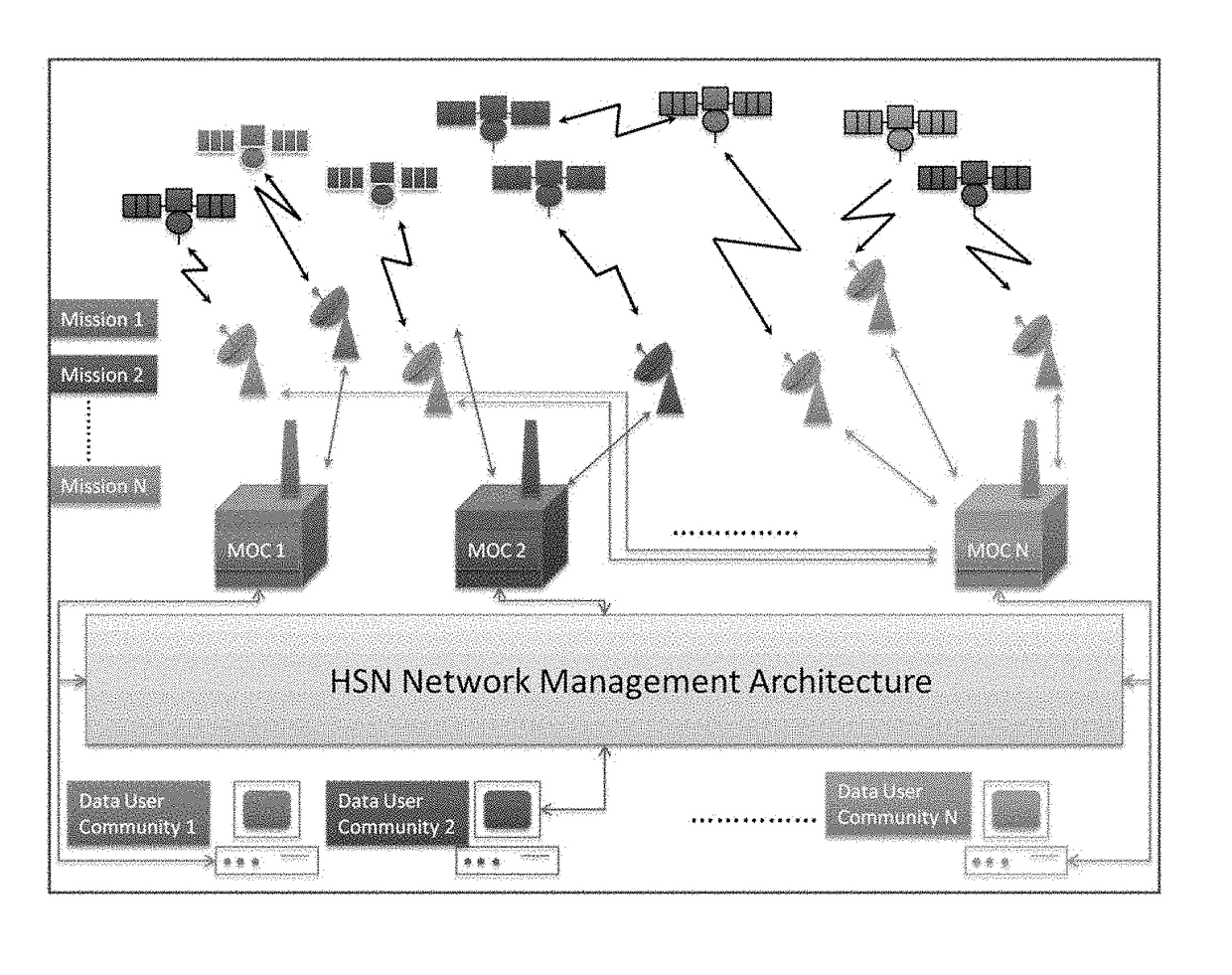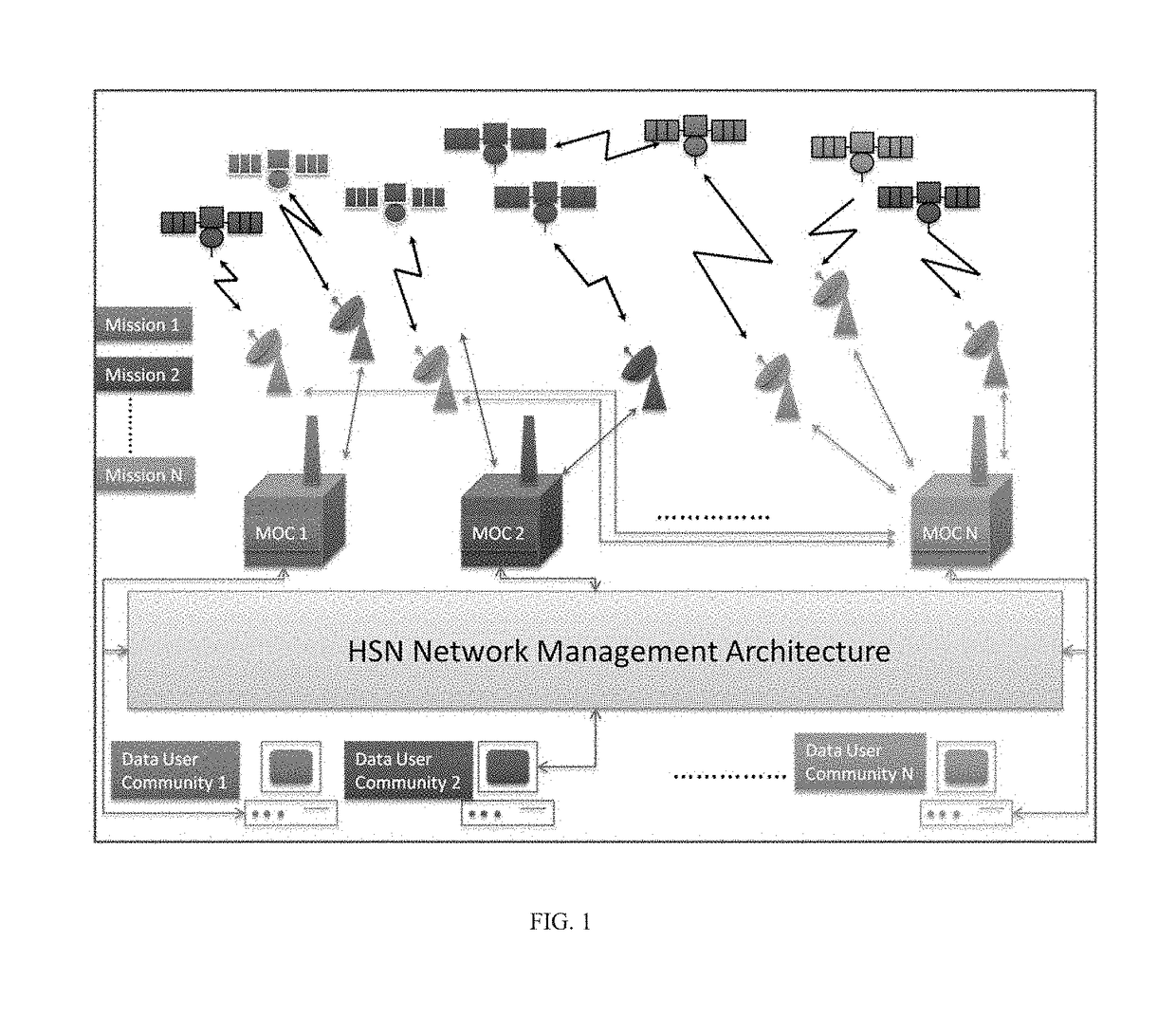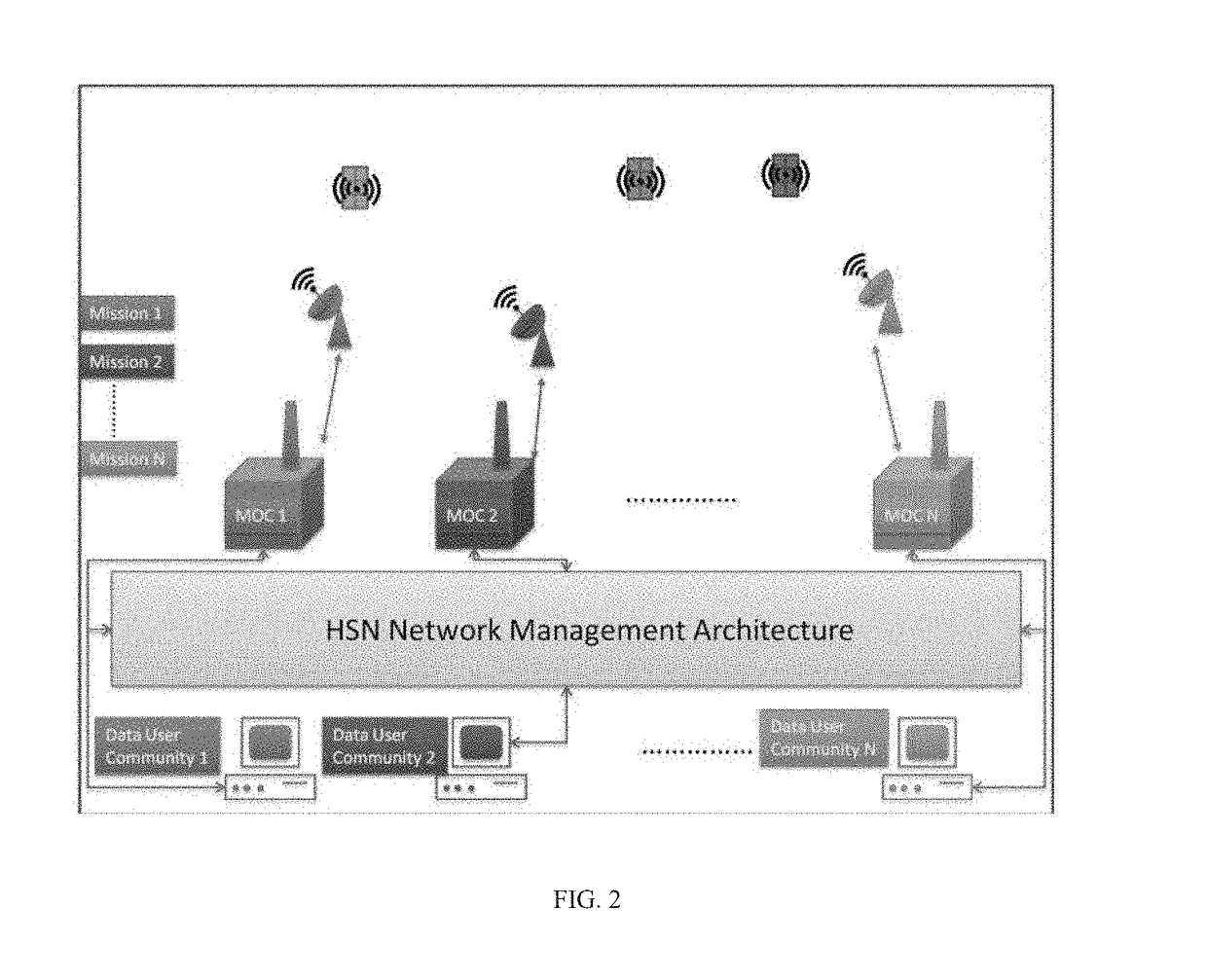Heterogeneous spacecraft networks
a spacecraft network and heterogeneous technology, applied in the field of network environments, to achieve the effect of low impact on the overall system resources
- Summary
- Abstract
- Description
- Claims
- Application Information
AI Technical Summary
Benefits of technology
Problems solved by technology
Method used
Image
Examples
Embodiment Construction
[0034]The present invention describes Heterogeneous Spacecraft Networks (HSNs) in which spacecraft from different missions and institutions can communicate with each other at low-cost and with low impact on overall system resources. HSNs use ground-based open standard protocols, such as the IEEE 802 family of standards, for space-to-space and space-to-ground communications. These standards enable spacecraft in LEO to have an ad-hoc data relay capability between each spacecraft. Using heterogeneous space-to-ground networks is also a part of the operation of HSNs.
I. A Cost-Effective, Multi-Institutional Earth Observation Platform
[0035]In recent years the Mission Design Center (MDC) at NASA Ames Research Center has been studying mission concepts involving clusters of small spacecraft capable of providing cost-effective solutions in orbit compared to space missions involving only a single larger spacecraft. Low-cost networks of small spacecraft are a viable alternative to large budget E...
PUM
 Login to View More
Login to View More Abstract
Description
Claims
Application Information
 Login to View More
Login to View More - R&D
- Intellectual Property
- Life Sciences
- Materials
- Tech Scout
- Unparalleled Data Quality
- Higher Quality Content
- 60% Fewer Hallucinations
Browse by: Latest US Patents, China's latest patents, Technical Efficacy Thesaurus, Application Domain, Technology Topic, Popular Technical Reports.
© 2025 PatSnap. All rights reserved.Legal|Privacy policy|Modern Slavery Act Transparency Statement|Sitemap|About US| Contact US: help@patsnap.com



